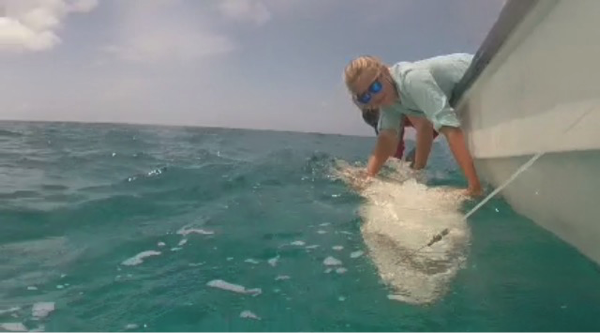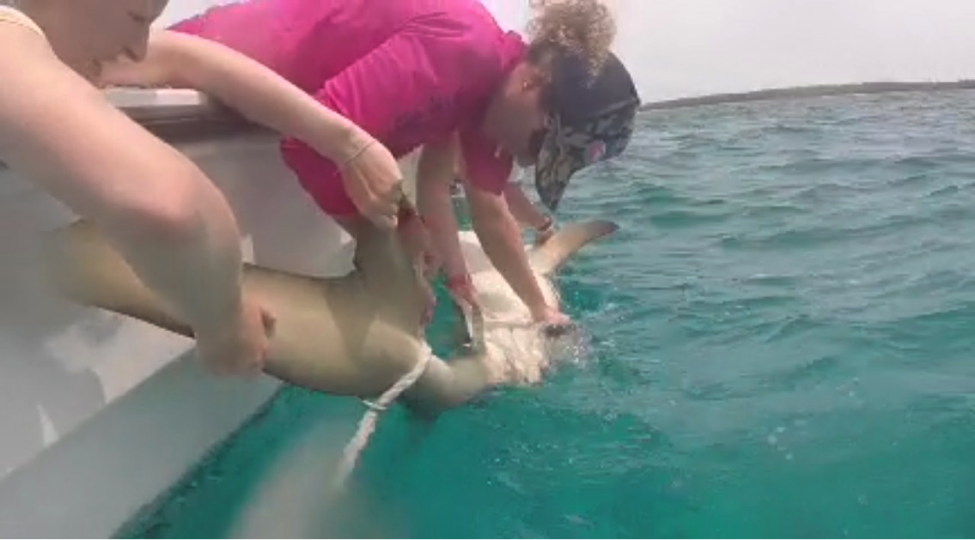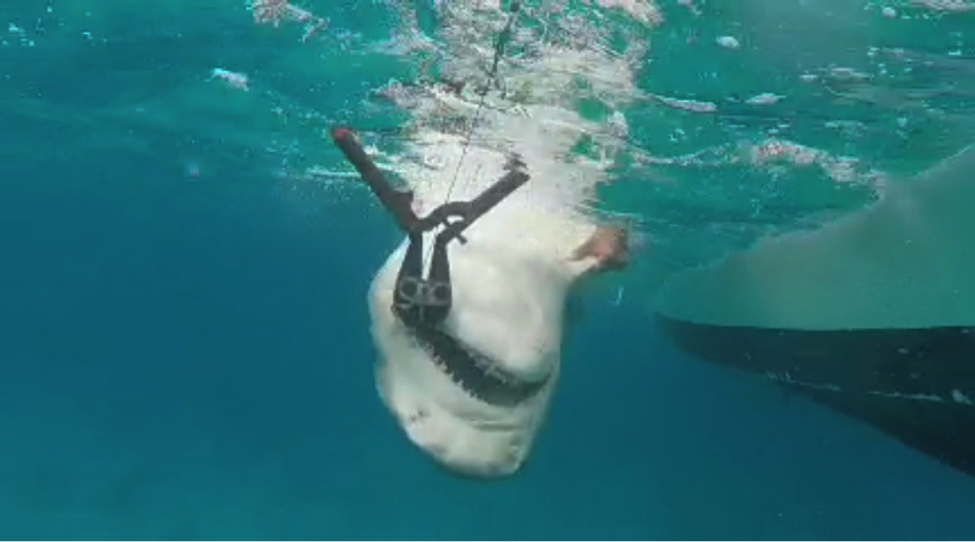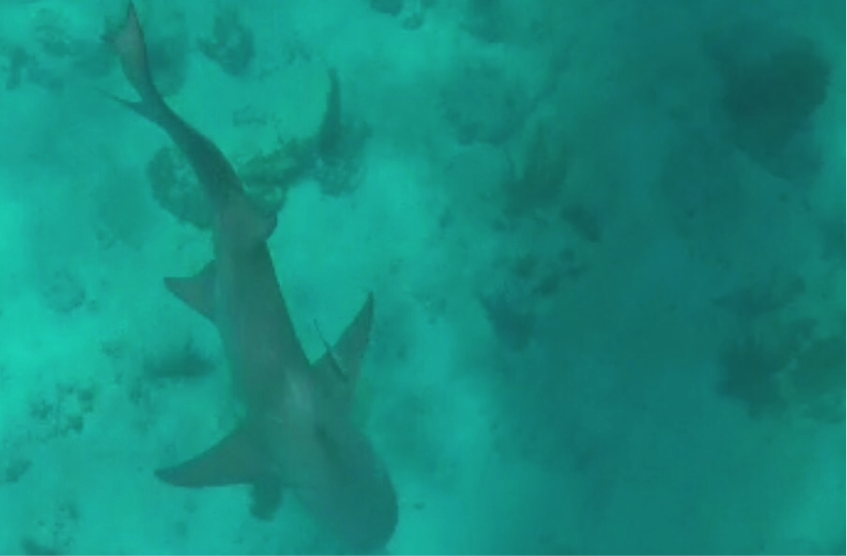On Wednesday, August 31, 2016, the CEI Shark Research and Conservation Team caught and sampled a huge 258 cm male lemon shark (Negaprion brevirostris). This thrilling capture was made while conducting a longline survey off of Cape Eleuthera, Bahamas to establish a dataset about the abundance and size of different coastal shark species in south Eleuthera. Although a wide variety of sharks can be found around the Bahamas, and there are many known lemon shark nurseries, mature lemon sharks are not commonly seen near south Eleuthera. The information collected from this rare catch can be used to trace the lineage of lemon shark populations found throughout the Bahamas, which can ultimately help influence future shark conservation and management initiatives.

Lemon sharks are a large species of coastal shark that can reach up to 3.5 m in length. They can be identified by their pale brown or olive coloring, and their two equally sized dorsal fins. Lemon sharks are listed as Near Threatened and their position at the top of the food chain makes them a valuable species for the local ecosystems. However, there is a limited amount of data on these adult sharks in this area which makes this catch all the more exciting. The Bimini Biological Field Station fills this knowledge gap by reconstructing adult male genetic information using the samples from the more abundant juveniles. Now we can include the data collected from this individual to create a more complete understanding of the local lemon shark population.

During the workup procedure, the lemon shark was measured to obtain information about its size, age, and sex, which can then be added to the data collected by CEI to show the dynamics of the local populations of sharks. The size of the shark was recorded by taking three specific measurements of its body. The team also collected a tissue sample, which will be used to build up a long term genetic record of the shark populations around Eleuthera. After all measurements and samples were collected, the lemon shark was tagged using a dart tag and a dorsal tag. These tags are used for identification purposes, allowing the research team to recognize a recapture. Following the workup procedure, the lemon shark was released in great condition and everybody was left in awe as it swam away.

